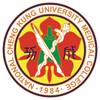【敬邀參與學術演講】114.3.13(四)12:10 Prof. Tapan K. Chaudhuri :Towards understanding the Protein Folding assistance of pathogenic chaperonins from Mycobacterium Tuberculosis
親愛的成大醫學院教授及同仁們
我們誠摯邀請您參加 來自印度理工學院德里分校 (Indian Institute of Technology Delhi) 生物科學學院Prof. Tapan K. Chaudhuri 的學術演講。
Prof. Chaudhuri 此次演講將探討 結核分枝桿菌 (Mycobacterium tuberculosis) 的分子伴侶蛋白 MtbCpn60.1 和 MtbCpn60.2,並與 Escherichia coli 中已廣泛研究的 GroEL/GroES 伴侶蛋白系統進行比較。研究揭示了這些分子伴侶在細菌蛋白質折疊過程中的關鍵作用,以及它們對病原菌存活和細胞功能的影響。
誠摯歡迎您撥冗參加,也歡迎轉知對此議題感興趣的同仁與學生一同參與,期待您的蒞臨!
敬祝 安康
【外賓演講】
日期與時間: 2025 年 3 月 13 日 (四) 12:10 PM
地點: 成大牙醫學系 34102 教室
講題:Towards understanding the Protein Folding assistance of pathogenic chaperonins from Mycobacterium Tuberculosis
演講摘要:
Mycobacterium tuberculosis produces two chaperonin proteins, MtbCpn60.1 and MtbCpn60.2, which are closely related in sequence to the Escherichia coli chaperonin, GroEL. However, unlike GroEL, MtbCpn60.1 and MtbCpn60.2 form smaller oligomers. Previous studies have shown that MtbCpn60.2 can replace GroEL in E. coli, while the function of MtbCpn60.1 remained unclear. In this study, we investigate the chaperone activities of MtbCpn60.1 and MtbCpn60.2 by assessing their ability to assist in folding specific chaperonin clients, such as DapA, FtsE, and MetK, in an E. coli strain lacking endogenous GroEL. Our results reveal that both MtbCpn60.1 and MtbCpn60.2 support cell survival and division by aiding in the folding of DapA and FtsE. However, only MtbCpn60.2 fully compensates for the absence of GroEL in E. coli cells. Additionally, we find that MtbCpn60.1, unlike MtbCpn60.2, has a limited ability to promote cell growth and assist in the folding of MetK. These findings suggest that while GroEL and MtbCpn60.2 share a largely overlapping set of client proteins, MtbCpn60.1 only interacts with a subset of GroEL's clients. We conclude that the functional differences between MtbCpn60.1 and MtbCpn60.2 are likely due to their distinct sequence characteristics, which affect their stability, efficiency, range of clients, and modes of action. In this presentation the fundamental aspects of bacterial chaperone assisted protein folding will be discussed and the role of pathogenic chaperonins would be demonstrated under the limelight of very well characterized Escherichia coli chaperonin GroEl and GroES.


 醫學院YouTube官方頻道
醫學院YouTube官方頻道